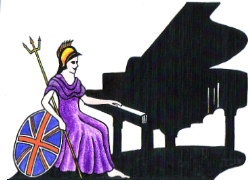Learn to Play the Piano Make Music
Piano Teacher in Enfield, London EN2 In Your Home

UK Piano Page

I am a very patient, experienced and friendly teacher who comes to your house. I have been teaching the piano for over 20 years, and I teach at beginner and intermediate level, or Grade 1-6, children and adults, exams or pleasure. I also prepare pupils for Grade 5 Theory ABRSM. I have so far primarily used ABRSM for piano exams but I would be happy to use other boards as well. I really enjoy teaching both children and adults and I believe that the pupils should enjoy music, and that everybody should progress at their own pace. I try to find individual interests, and hopefully never just push from one grade to the next. My degree is in music pedagogy and I draw on this as well as on my wide experience.
I live in Enfield, but I can travel to many other areas in NW London, depending on availability.
My normal charges are (although they can be negotiated depending on circumstances):
Qualification: BA Music Pedagogy, Novi Sad
Hampstead, London
England
Experienced piano teacher and accompanist
Great Harwood, Lancashire
England
I teach piano & violin from my own home in Great
Music Festival for performers and guests Our 10th
18-06-2022 12:30PM
The Morecambe Bay Piano Group was set up to extend
11-12-2021 01:00PM
The Morecambe Bay Piano Group was set up to extend
08-01-2022 01:00PM
The Morecambe Bay Piano Group was set up to extend
12-02-2022 01:00PM